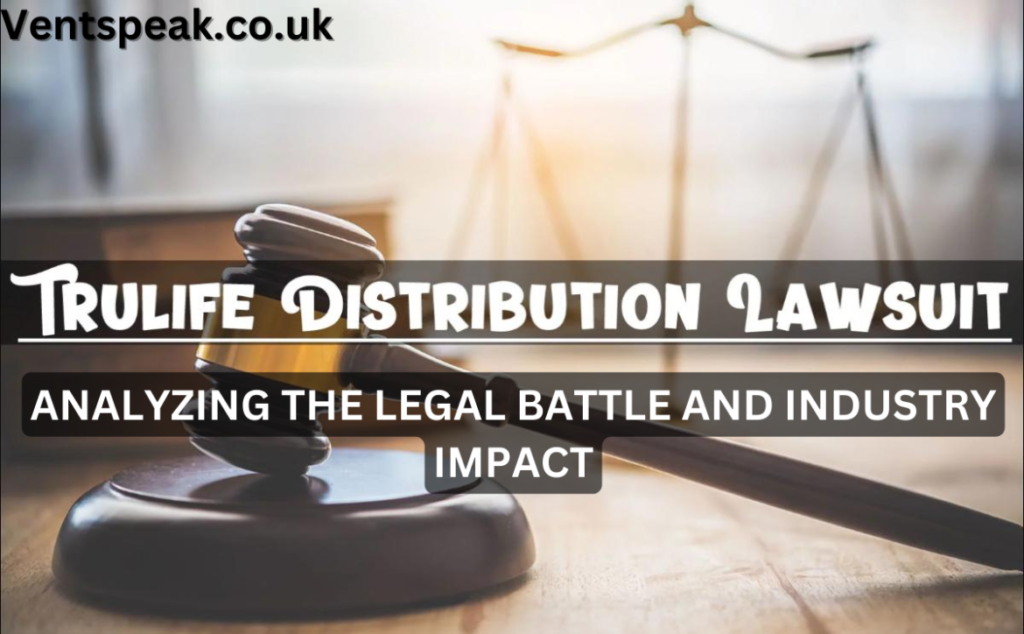The Trulife Distribution lawsuit has captured the attention of industry insiders and legal enthusiasts alike. This case not only highlights complex legal battles within the distribution sector but also sheds light on the intricacies of corporate governance and contractual disputes. Here, we delve into the details of the lawsuit, examining the events leading up to it, the core legal arguments presented, and the potential ramifications for the parties involved and the industry at large.
Background of the Case
The Trulife Distribution lawsuit originated from a conflict between Trulife Distribution, a company specializing in the marketing and distribution of health and wellness products, and one of its former partners. The lawsuit was filed after allegations surfaced that the partner company had breached contractual agreements, including exclusivity clauses and non-disclosure agreements critical to their joint operations. This section of the legal battle is centered around the misuse of proprietary information that was allegedly used to gain a competitive advantage unfairly.

Legal Claims and Defenses
The crux of the lawsuit revolves around several key legal claims made by Trulife Distribution. Firstly, the accusation of breach of contract forms the foundation of their legal strategy. Trulife argues that their partner not only broke the agreed terms by engaging with competitors but also failed to meet the sales targets as stipulated in their agreement, which they claim resulted in significant financial losses. In defense, the accused company contends that the contractual expectations were unrealistic and that Trulife’s claims of exclusivity were not legally binding due to the way the contract was structured.
Economic Impact on Trulife
The economic ramifications of this lawsuit for Trulife Distribution are substantial. The dispute has not only strained resources but has also impacted the company’s market reputation and its relationships with other business partners. Financial analysts suggest that the ongoing legal fees, potential settlements, and operational disruptions could diminish Trulife’s profitability in the short to medium term. Moreover, the uncertainty surrounding the outcome of the case has led to cautiousness among investors, affecting the company’s stock performance and investment inflows.
Implications for the Industry
This lawsuit is pivotal, not just for the parties involved but for the entire health and wellness distribution industry. It sets a precedent for how contractual disputes of this nature are perceived and handled legally. Industry experts argue that the outcome of this case could lead to more stringent contractual agreements in the sector, with increased emphasis on compliance and exclusivity clauses. Furthermore, the lawsuit underscores the importance of clear legal frameworks in partnerships and the potential consequences of their breach.
The Legal Process and Expected Timeline
Understanding the legal process involved in the Trulife Distribution lawsuit provides insight into how such cases are typically navigated through the judicial system. Currently, the lawsuit is in the pre-trial phase, where both parties are engaged in the discovery process, exchanging documents and evidence relevant to the case. Legal experts anticipate that this phase could last several months, given the complexity of the issues involved. Following this, the case is expected to proceed to trial unless a settlement is reached beforehand. The entire process could span several years, considering possible appeals by the losing party.
Broader Legal and Ethical Considerations
The Trulife Distribution lawsuit also brings to the fore broader legal and ethical questions. It challenges the ethical obligations of companies in upholding their contractual duties and the moral implications of business strategies that may skirt the edges of legal frameworks. This case serves as a critical reminder of the importance of corporate ethics in maintaining healthy business relationships and the potential legal consequences when these are not adhered to.
Public and Media Perception
The role of the public and media media in shaping the narrative around the Trulife Distribution lawsuit cannot be underestimated. Media coverage has varied, with some outlets portraying Trulife as a victim of corporate malfeasance. In contrast, others depict them as a large corporation trying to squash smaller competitors through legal means. Public opinion is similarly divided, and this perception can influence the proceedings, especially in a jury trial where jurors may have preconceived notions about the parties involved.
Conclusion
The Trulife Distribution lawsuit is a complex legal battle with far-reaching consequences. It exemplifies the challenges and pitfalls that companies can encounter in the fiercely competitive distribution industry. As the legal process unfolds, it will be important for industry stakeholders to monitor developments and prepare for the potential outcomes and their implications for business operations and legal standards in the sector. This case not only serves as a critical lesson in legal and corporate strategy but also underscores the importance of ethical practices in business.







